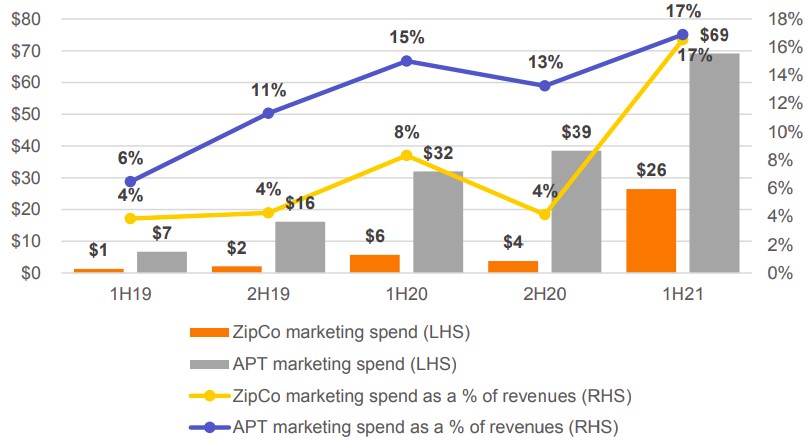Choose your own valuation metric
As a child, I enjoyed reading "Choose Your Own Adventure" books where the reader assumed the role of the lead character and made decisions that determined what happened next. Then I was thrown into a world of finance in the year 2000 where some investors were sticking with the discipline of multiples of earnings and discounted cash flows but a separate cohort was choosing a different adventure, getting excited about share prices relative to "eyeballs" (website visitors) and clicks.
The "eyeballs" metrics choice was a bad one that had a disappointing ending. But there's always new valuation metrics emerging. What seems to be a popular choice right now is to look at Enterprise Value (market cap + debt - cash) relative to Gross Merchandise Value - EV/GMV.
EM/GMV is being applied to online marketplaces and Buy Now Pay Later players. It is valuing companies relative to the total value of transactions that it facilitates - for example the total value of goods sold on eBay. But GMV doesn't really tell you much about the economics of a business.
eBay, the granddaddy of online marketplaces, turns just under 11% of GMV into revenue, while craft market Etsy takes about 17%. Among ASX listings, Freelancer (FLN) takes 6.6% of transactions as revenue and the prospectus for recent IPO Airtasker (ART) forecast its revenue will be 17% of GMV. Figure 1 compares ASX-listed marketplace businesses reporting GMV or the equivalent and their conversion of GMV into revenue and gross profit.
Figure 1: ASX-listed comparisons of margins on GMV

Source: Equitable Investors, company data
All other things being equal, higher EV/GMV multiples should be applied to the companies with higher rates of conversion of GMV to revenue.
But all things aren't equal. The growth potential is obviously a key factor. So is the amount of marketing spend and corporate overheads.
If you use EV/GMV as a valuation benchmark, you are making assumptions about the relative scalability of the business, the scope for sharing in customer spend and the required marketing spend to support sales (the Customer Acquisition Cost - CAC). Then there the cost of keeping the offering up to ever-increasing customer expectations - probably reflected in development spend.
The following chart, Figure 2, sets out how two leading players in the BNPL space have had very different approaches to marketing spend relative to revenue over the past few years.
Figure 2: Comparison of marketing spend by two leading BNPL players

Source: Goldman Sachs (March 17, 2021)
For our investment adventures we continue to choose a path incorporating the actual economic share of transactions a company can be expected to earn and the cost structure.
If a business is expected to be loss-making in the near-term, the tools of choice would be to discount forecast future cashflows and/or to calculate the Lifetime Value of the customer base and whether the cost of acquiring customers is rewarded appropriately.
There's a fair chance that EV/GMV may have a similar ending to "eyeballs" as a valuation tool.
Not already a Livewire member?
Sign up today to get free access to investment ideas and strategies from Australia’s leading investors.
7 stocks mentioned

